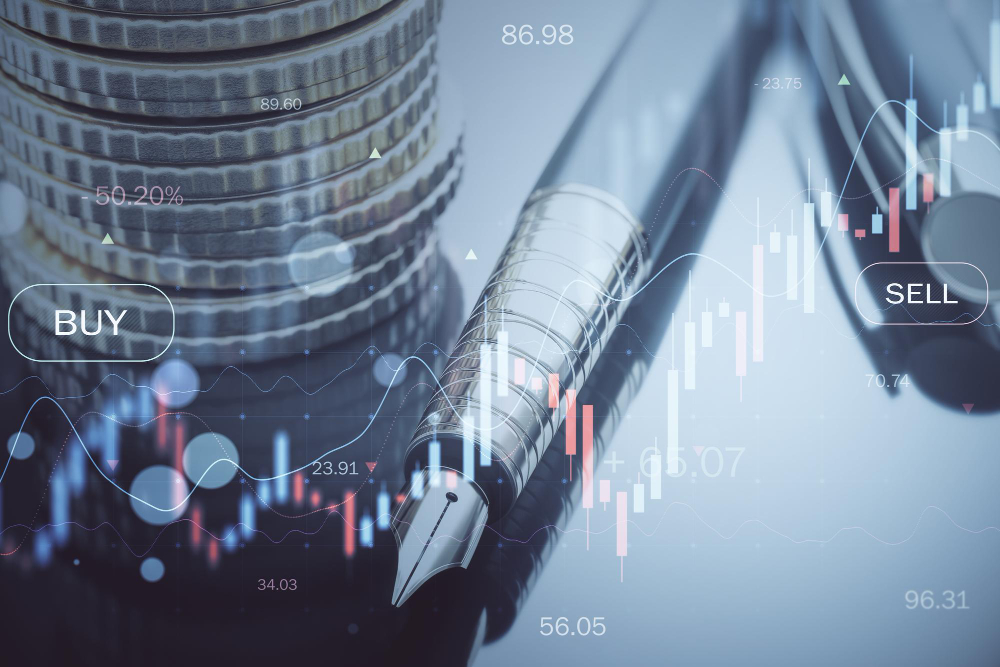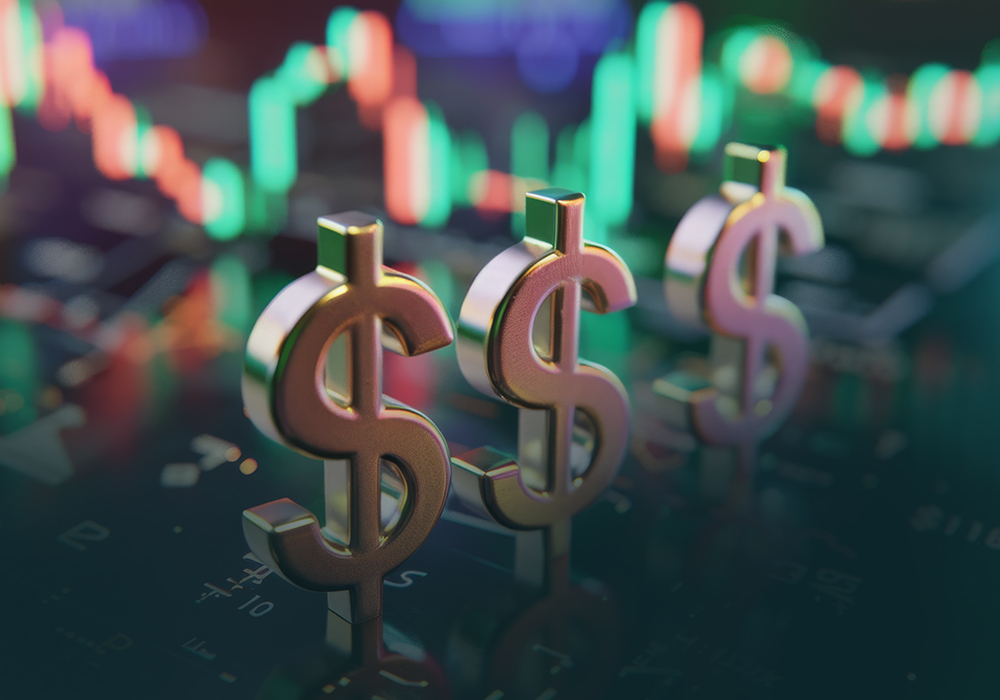Algorithmic trading, also known as algo trading or automated trading, has transformed the way stocks are bought and sold in financial markets. By using sophisticated algorithms to execute trades at high speeds, algorithmic trading has increased the efficiency of financial markets while also providing traders with the ability to capitalize on minute price fluctuations.
These algorithms are designed to follow specific rules or criteria, executing trades without the need for human intervention. In this article, we will explore the rise of algorithmic trading, how it works, its advantages, and its impact on the stock market.
What is Algorithmic Trading?
Algorithmic trading refers to the use of computer programs to execute trades based on predefined rules and strategies. These rules can be as simple as buying or selling a stock when it reaches a certain price or as complex as executing hundreds of trades per second based on multiple market conditions. The algorithms are designed to react to market data in real time, placing orders based on specific parameters such as price, volume, and timing.
Common strategies used in algorithmic trading include:
- Trend-following strategies: Algorithms designed to detect and trade along with upward or downward market trends.
- Arbitrage: Algorithms that exploit price discrepancies between different markets or exchanges.
- Market making: Algorithms that provide liquidity by placing both buy and sell orders to profit from the bid-ask spread.
- Mean reversion: Algorithms based on the idea that stocks tend to revert to their historical average price after deviating too far.
How Does Algorithmic Trading Work?
Algorithmic trading works by automating the decision-making process. It involves using advanced mathematical models and algorithms to analyze market data, identify trading opportunities, and execute orders—all within milliseconds. The process is typically broken down into three main steps:
- Market Analysis and Data Collection
The algorithm gathers real-time market data from exchanges, including stock prices, trading volumes, and historical performance. This data is processed using mathematical models that help identify trading signals and opportunities.
- Decision Making
Once the algorithm detects a signal based on the predefined rules, it decides whether to place a trade. The decision is made in a fraction of a second, and the algorithm determines the size of the trade, the entry and exit points, and the timing.
- Execution
After a decision is made, the algorithm automatically executes the trade by sending an order to the exchange. This eliminates the need for manual intervention, reducing the time lag between the decision and the execution of the trade. High-frequency trading (HFT) algorithms can execute thousands of trades in a matter of seconds, capitalizing on small price movements.
The Advantages of Algorithmic Trading
- Speed and Efficiency
One of the most significant advantages of algorithmic trading is the speed at which trades can be executed. Algorithms can analyze vast amounts of market data and execute trades in milliseconds, far faster than any human trader. This speed gives algo traders a competitive edge, especially in high-frequency trading, where small price movements can result in substantial profits.
- Elimination of Human Emotion
Algorithmic trading removes the emotional aspect of trading, which can often lead to poor decision-making. Fear, greed, and overconfidence are common pitfalls for traders, and they can result in impulsive actions or missed opportunities. By relying on predefined rules, algorithms execute trades based solely on data and logic, reducing the potential for emotional bias.
- Increased Market Liquidity
Algo trading contributes to market liquidity by providing a constant flow of buy and sell orders. Market makers, who use algorithmic strategies, place both buy and sell orders to profit from the bid-ask spread. This increased liquidity makes it easier for traders to enter and exit positions without experiencing significant price slippage.
- Cost Efficiency
By automating trades, algorithmic trading reduces the need for manual intervention, lowering transaction costs. Algorithms can execute trades at optimal times, minimizing the impact of market inefficiencies. Additionally, the use of algorithms allows traders to execute large orders without significantly affecting the market price, reducing the risk of slippage.
- Diversification
Algorithmic trading enables traders to manage multiple strategies and asset classes simultaneously. Since algorithms can operate around the clock without human oversight, they can monitor and trade across different markets and time zones, providing diversification and reducing the risk of over-reliance on a single strategy.

The Impact of Algorithmic Trading on the Stock Market
- High-Frequency Trading (HFT)
One of the most notable aspects of algorithmic trading is high-frequency trading (HFT), a subset of algorithmic trading that involves executing thousands of orders in fractions of a second. HFT firms use algorithms to capitalize on tiny price discrepancies in the market. This practice has increased competition in the stock market and has led to more efficient price discovery.
However, HFT has also drawn criticism for creating flash crashes, where large volumes of trades occur in a very short time, causing extreme price volatility. For example, the 2010 Flash Crash saw the Dow Jones Industrial Average drop nearly 1,000 points in a matter of minutes, only to recover just as quickly. The event was partially attributed to the actions of HFT algorithms.
- Reduction in Trading Costs
The rise of algorithmic trading has significantly reduced trading costs for both institutional and retail investors. By automating large orders and optimizing execution, algo trading minimizes the costs associated with manual trading, such as broker fees and slippage.
- Increased Market Efficiency
Algorithmic trading has contributed to more efficient markets by increasing liquidity and narrowing bid-ask spreads. This has improved price discovery, ensuring that stock prices more accurately reflect the underlying value of the asset. The increased competition among algo traders has also reduced arbitrage opportunities, making markets more difficult to manipulate.
- Concerns About Market Manipulation
While algorithmic trading offers many benefits, it has also raised concerns about market manipulation. Some algo traders engage in spoofing, where they place large orders with no intention of executing them, to manipulate the market and create false buying or selling pressure. Although regulators have taken steps to combat this practice, it remains a challenge in the fast-paced world of algo trading.
- Reduced Role of Human Traders
As algorithmic trading continues to grow, the role of traditional human traders has diminished. Many large institutions rely heavily on algorithms to execute their trades, reducing the need for manual oversight. While this has led to increased efficiency, it has also resulted in job losses within the trading profession.
Challenges of Algorithmic Trading
- Complexity and Maintenance
Developing and maintaining effective trading algorithms requires significant expertise in mathematics, programming, and financial markets. Even small errors in coding can lead to large losses. Additionally, algorithms need to be constantly monitored and updated to adapt to changing market conditions.
- Over-Optimization
Another challenge of algorithmic trading is the risk of over-optimization, where algorithms are tailored too closely to historical data. This can result in the algorithm performing well in backtesting but failing in live market conditions. Traders need to ensure that their algorithms are robust enough to handle unforeseen market events.
- Market Volatility
While algorithms are designed to execute trades based on predefined rules, extreme market volatility can create situations where algorithms behave unpredictably. During periods of high volatility, such as major news events or financial crises, algorithmic strategies can experience large losses if not properly risk-managed.
- Regulatory Scrutiny
Algorithmic trading, particularly HFT, has come under increased regulatory scrutiny due to concerns about market manipulation and systemic risk. Governments and regulatory bodies, such as the U.S. Securities and Exchange Commission (SEC), have implemented rules to monitor and control the impact of algorithmic trading on financial markets. This includes measures to prevent flash crashes and spoofing.
The Future of Algorithmic Trading!
Algorithmic trading is likely to continue evolving as technology advances and markets become more interconnected. Artificial intelligence (AI) and machine learning are increasingly being integrated into algorithmic strategies, allowing algorithms to learn from historical data and adapt to changing market conditions in real time. These developments could lead to even more efficient and profitable trading strategies.
Additionally, the rise of quantum computing has the potential to revolutionize algorithmic trading by enabling computers to process vast amounts of data at unprecedented speeds. This could lead to new levels of accuracy and sophistication in market analysis and trade execution.
Conclusion
Algorithmic trading has transformed the stock market by providing traders with powerful tools to execute trades quickly and efficiently. With the rise of high-frequency trading and the integration of AI and machine learning, the future of algorithmic trading promises to bring even more innovation to financial markets.
However, traders must be aware of the potential risks and challenges associated with algo trading, including market volatility, over-optimization, and regulatory scrutiny. As the landscape of trading continues to evolve, algorithmic trading will remain at the forefront of automated investing, offering both opportunities and challenges for traders.rstanding the factors that influence their movements, traders can make more informed decisions and tailor their strategies to suit their risk tolerance and market preferences.
Access diverse trading opportunities with MuxCap’s trusted solutions.
Popular Posts
- Understanding Stock Market Indicators: Key Metrics for Successful Trading and Investment

- Exploring the World of Crypto Futures and Options: Strategies & Risks

- How Leverage Works in Forex and Futures Markets: Opportunities and Pitfalls

- Algorithmic Trading in the Stock Market: The Future of Automated Investing


























